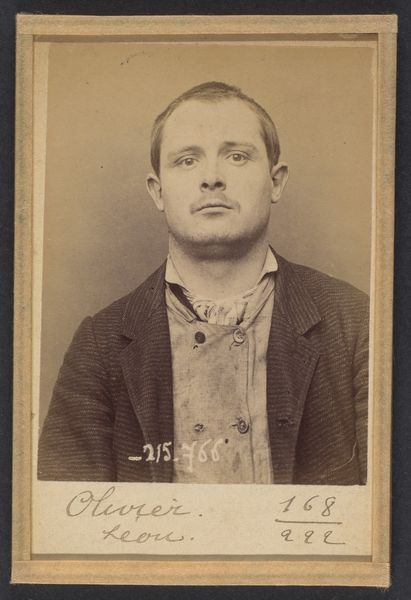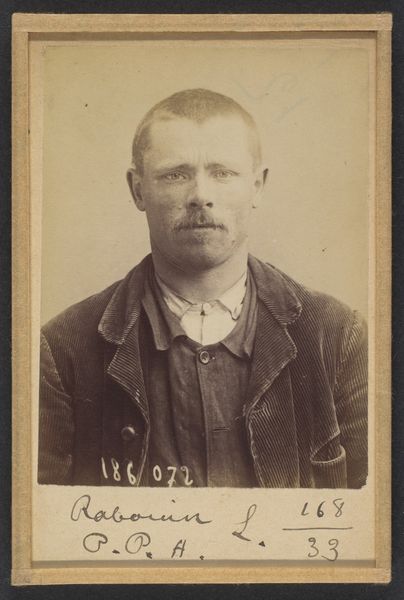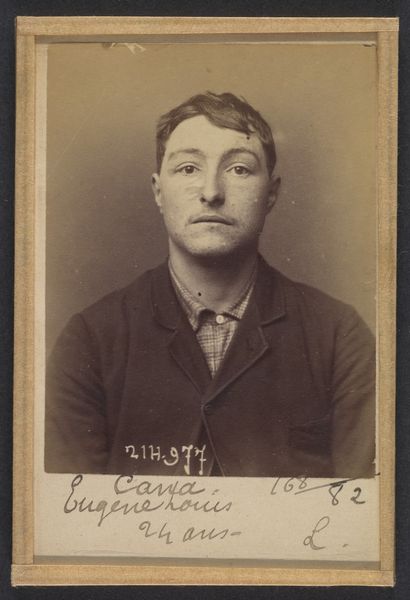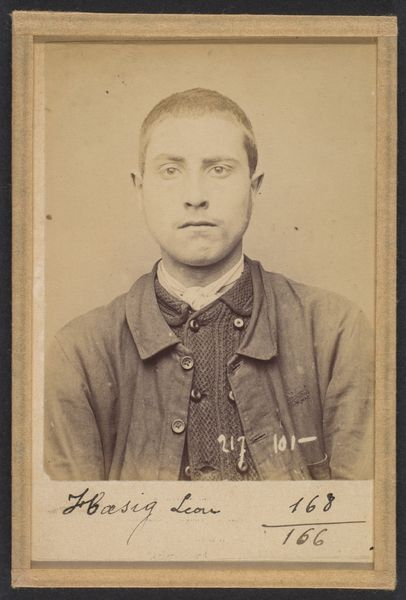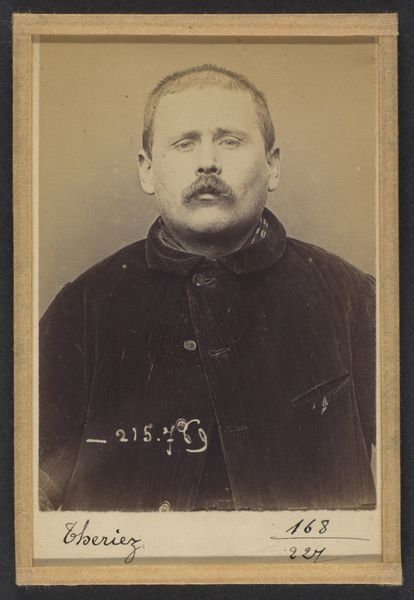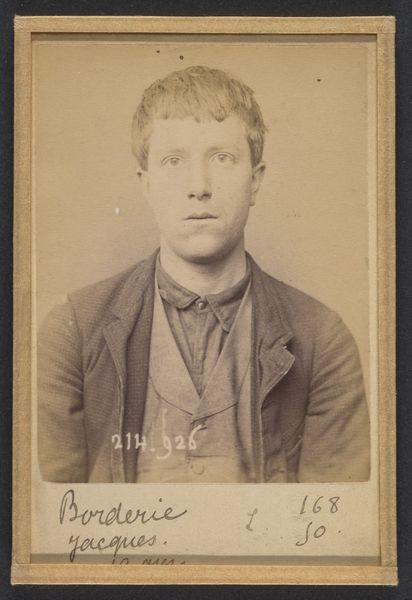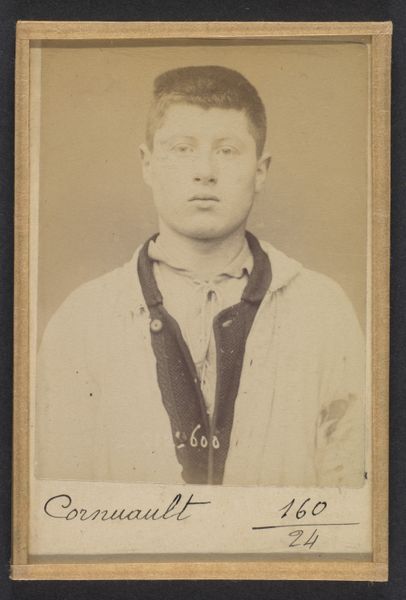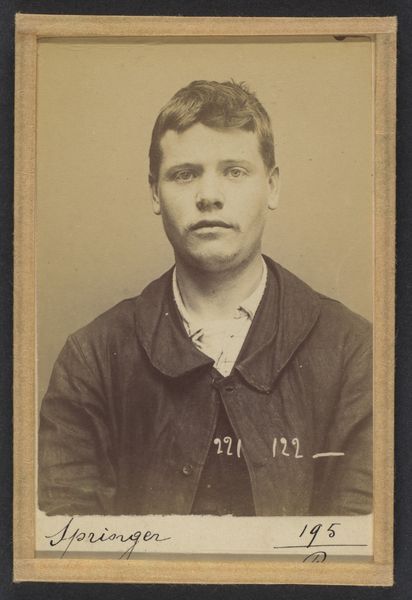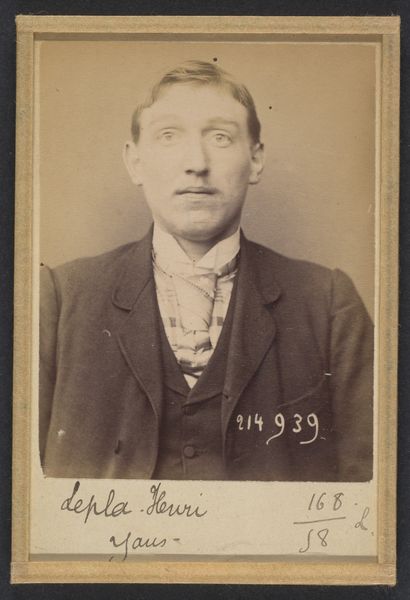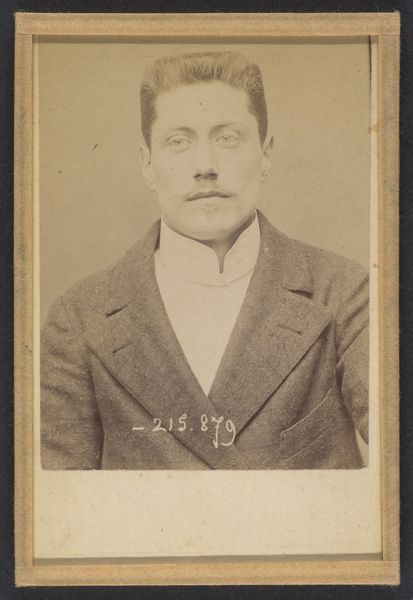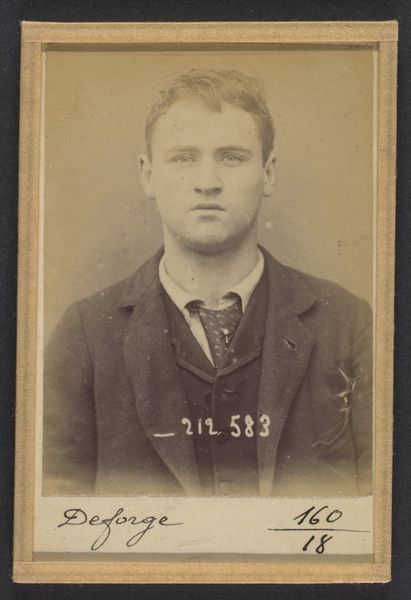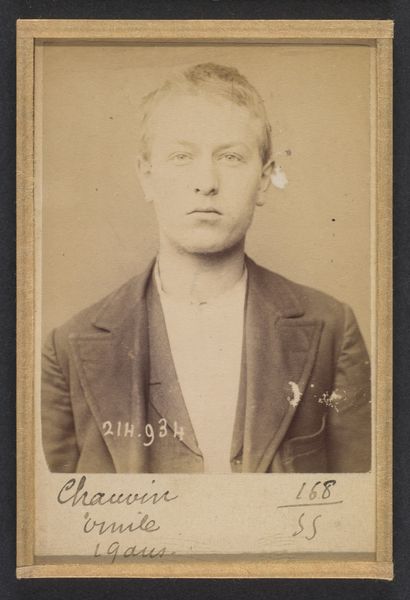
Buhr. Victor. 25 ans, né à Cologne (Allemagne). Peintre décorateur. Anarchiste. 2/3/94. 1894
0:00
0:00
#
portrait
#
low key portrait
#
portrait image
#
portrait
#
portrait subject
#
film poster
#
portrait reference
#
men
#
portrait drawing
#
portrait art
#
fine art portrait
#
celebrity portrait
Dimensions: 10.5 x 7 x 0.5 cm (4 1/8 x 2 3/4 x 3/16 in.) each
Copyright: Public Domain
Curator: Alphonse Bertillon created this portrait in 1894; it is titled "Buhr. Victor. 25 ans, né à Cologne (Allemagne). Peintre décorateur. Anarchiste. 2/3/94." and resides here at the Metropolitan Museum of Art. The stark, sepia tones immediately create a sense of austerity, almost oppression. Editor: Indeed. The sitter's gaze is direct, unwavering. It speaks of defiance. And you see that inscription stating “Anarchiste,” it infuses the whole image with a powerful layer of sociopolitical meaning. Curator: Precisely! It underscores the circumstances of this image’s creation: Bertillon was a pioneer of forensic photography and identification, what we know as the mugshot, using precise measurements and standardized poses. We can think about how it intersects criminal justice and scientific methods, which were deployed, consumed, and interpreted in this period. Editor: That very framing is fascinating. The number displayed, and the somewhat rushed inscription. The photograph becomes, not simply an image, but an archival document of the state. Yet, doesn’t it simultaneously create a peculiar sort of folk hero? I'm interested in how “anarchist” might act as a calling card, then and now, signaling cultural dissidence. Curator: Anarchism, like other artistic avant-gardes, had adherents across all strata of society, and we might wonder what particular set of material circumstances propelled Buhr, this twenty-five-year-old painter-decorator, toward the revolutionary philosophy in 1894. It could be the exploitation within the painter-decorator’s craft itself. Editor: It humanizes what could have remained a strictly bureaucratic, even dehumanizing, police document. His youth, combined with the label, and steady gaze… it asks us to look beyond simple classification, doesn’t it? To think about individual resistance. Curator: Right, there’s something really interesting in how it pushes on the consumption and deployment of visual and textual forms by individuals that are considered enemies of the state. Editor: Examining Victor Buhr, and Bertillon’s process simultaneously reminds us of the power imbued within an image, to record, to classify, and perhaps most profoundly, to remember. Curator: Definitely, viewing it through a contemporary lens, we also need to question the ethical issues of visual control during this historical era. It opens our eyes to consider how labor and identity are depicted through the power relations in photography.
Comments
No comments
Be the first to comment and join the conversation on the ultimate creative platform.
